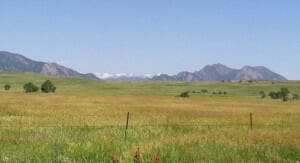
View From Indiana Street, June 2014
I instantly fell in love with the majestic Rocky Mountains when I visited Colorado in the 1970s. Roads running parallel to the foothills made me turn West, while highways heading into the mountains made me eager to see more. After relocating to the metro Denver area, I encountered streets that provided breathtaking panoramic views of the foothills. Anyone heading south on Indiana Street from Colorado 128 can definitely substantiate this claim. However, I never thought that I would consider living anywhere near this beautiful location.
Unlike most places that will eventually be subject to development, this particular area will remain protected. The land to the west of Indiana Street is the former site of the Rocky Flats nuclear weapons factory. From 1952 to 1989, Rocky Flats produced triggers for nuclear weapons. An FBI raid led to its closure. Between 1995 and 2007, the US government attempted to clean up this contaminated site. A significant amount of radioactive and toxic materials remains buried, while tons of radioactive and hazardous materials were shipped to other states. Government officials decided it was not possible to remove everything. Critics continually question this decision and the overall safety of the surrounding environment.
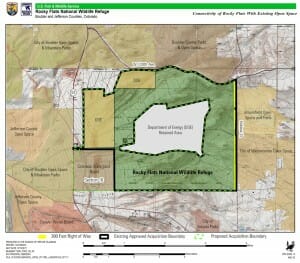
In 2001, President George W. Bush signed the Rocky Flats National Wildlife Refuge Act. After the remediation was completed in 2007, the Department of Energy (DOE) maintained jurisdiction over approximately 1/3 of the land (1,308 acres) that was still considered unsafe. Official documents refer to this area as the Central Operable Unit (COU). This parcel will remain closed to the public and is continually being monitored by the DOE. The remaining 2/3 (3953 acres) was placed under the jurisdiction of the United States Fish and Wildlife Service (USFWS). The Colorado Department of Public Health and Environment and the Environmental Protection Agency (EPA) determined that this parcel was safe for wildlife refuge workers and visitors. The Rocky Flats National Wildlife Refuge plan calls for 12.8 miles of multi-use trails and 3.8 miles of hiking-only trails.
The lack of sufficient federal funding has delayed the opening of this controversial wildlife park. No trespassing signs are visible on the barbed wire fence that surrounds the huge perimeter. Thus, this immense acreage is currently closed to the public.
Twenty-five years after the FBI’s historic raid at the Rocky Flats nuclear weapons factory, the health status of former workers is still being assessed and the safety of the surrounding area is being questioned. These controversial topics as well as others were addressed last weekend during a 3-day symposium hosted at the Arvada Center for the Arts and Humanities. This event brought in a cross section of individuals. The panel discussions focused on the raid, the secrecy surrounding the facility, forms of art associated with Rocky Flats, a film screening of Dark Circle, the health status of the workers, and the known effects of the contamination.
Since I live nearby, I chose to attend a couple of the discussions. Until recently, I resided just north of Colorado 128 in the charming community of Superior. Prior to moving to the Rock Creek subdivision, I researched the possible ill effects of living so close to a former nuclear weapons factory. I was unable to find any reliable data that pointed to current cancer or disease clusters in the vicinity of Rocky Flats. Also, I could not find a health related reason for avoiding Superior (2012 population- 12,782)
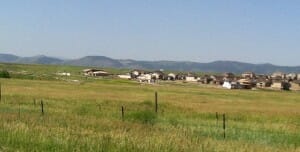
When we downsized last year, we checked out a new community called Candelas. This development was being built on the southern border of the Rocky Flats National Wildlife Refuge. The end result will be a nearly 1500-acre master planned community that will include residences built by many respected builders- Lennar, Richmond American Homes, Ryland Homes, Sopris Homes, Standard Pacific Homes, Tri Pointe Homes, and Village Homes. Despite this list of well known builders, I wondered if there was any new scientific data showing an increased risk associated with living near the wildlife refuge.
I did more research. This time around, there was more information available online. I viewed articles on websites and took notes. I was suspicious of the allegations made by the Rocky Mountain Peace and Justice Center. This organization has a history of making what many consider to be false statements on an unrelated issue. As a result, I questioned many of their statements.
I read Kristen Iversen’s award-winning book, Full Body Burden: Growing Up in the Nuclear Shadow of Rocky Flats. Kristen lived in Arvada and worked at Rocky Flats. In addition to her first-hand accounts, she discusses the research that she compiled. Since I have not read all of the documentation that she cites, it is not possible to determine the veracity of her statements. It should be noted, however, that several Amazon reviewers point out untrue and misleading statements.
In order to obtain more information, I spoke with David Abelson, Executive Director of the Rocky Flats Stewardship Council, and with Carl Spreng, the Colorado Department of Public Health & Environment project manager for the oversight of the restoration work at Rocky Flats. Both men provided information that refuted some of Kristen’s claims.
I organized my thoughts and wrote a blog called- Living Near Rocky Flats.
After assessing the risks, my husband and I purchased a new home in Candelas.
11 Reasons Why I Feel Safe Living in Candelas.
- Remediation of Rocky Flats. The clean up met or exceeded the designated standards set by the government agencies. Most of the toxic and radioactive materials were sent to another location. Hazardous substances left onsite were buried at least 6 feet underground. This confined area is not open to the public. The DOE controls and provides security for this site. The wildlife sanctuary acts as a buffer between the COU and Candelas.
- Cancer Incidence Report. The Colorado Central Cancer Registry and the CDPHE prepared a report that examined the ratios of cancer incidence in 10 areas around Rocky Flats compared to the remainder of the Metro Denver area. The first set of data cover 1980-89 with a follow up of 4 areas from 1990-95. The report concluded that the communities adjacent to Rocky Flats had comparable cancer incidences with the rest of the Denver area. Four areas were reexamined in the 1990s. Two of these places showed no issues while the 2 others showed increases that could be attributed to smoking. If a more recent report is available, please feel free to share the results in the comment section of this blog.
- Rocky Flats Legacy Management Agreement. Under the terms of this agreement, the site is monitored on a regular basis. Voluminous quarterly and annual reports detail the data obtained. The data is very technical, but the summaries do not include any alarming news.These results are posted on the DOE’s website.
- Water Monitoring at Rocky Flats National Wildlife Refuge. Over a decade ago, the experts decided that it was no longer necessary to monitor the soil and air. However, ground and surface water leaving the area are continuously monitored. The results meet or exceed all of the required government standards. The level of plutonium is at least 100 times cleaner than the regular federal standards. The 13-page summary for the 2013 water monitoring had attached appendixes that included a 153 page hydrologic report and a 388 page water quality report.
- Rocky Flats National Wildlife Refuge. This area provides a sizeable buffer between the area controlled by the DOE and the residential area. Under the terms of the Rocky Flats Legacy Management Agreement, the animals, birds, and vegetation are continually scrutinized.
- Department of Energy Corrective Action Decision/Record Decision. This report (2006) stated that the land later known as Candelas could be developed for residential use.
- Candelas Soil Tests. In 2011, CTL Thompson, Inc. measured radioactive activity using Ludlum 19 Micro-R Meters to measure gamma radiation readings throughout the development. Their study showed background readings that ranged from 7 to 18 micro-roentgens per hour (uR/hr). The CTL Thompson, Inc. experts concluded that “uR/hr emissions are generally similar to background levels in the area and are generally the same or lower than others collected by CTL in the Denver Metro area… The Highlands Ranch area has a reading of 19 uR/hr.” The CTIL Thompson report substantiates the DOE’s decision that the land could be developed for residential use. Additional testing was done in 2013 that confirmed the earlier results.
- Rocky Flats Stewardship Council. (RFSC) This entity brings together local municipalities and institutions to oversee activities associated with the former Rocky Flats site. It also provides a forum for discussions among the DOE, the regulatory agencies, and the local communities.The group monitors the water testing and refuge management. It is a source of information regarding contaminant management. The individuals on this board are elected to safeguard the well being of the people who live in the area. There is no evidence to suggest that they are not doing their jobs.
- Evaluating Risk Factors. The risk of living near Rocky Flats was far greater when it was operating than it is today. The accidents in the 1950s and 1960s released excessive contaminants. While a significant percentage of people who worked at Rocky Flats or who lived nearby during its operation have suffered health issues, a sizeable number of people did not develop any problems. I could find no data that supports the contention that people who are currently living near the wildlife refuge have a greater risk of cancer or of incurring health issues. Instead, I found research that stated the contrary. A Colorado government website estimates a negligible chance of dying as a result of living near Rocky Flats. It appears more likely that I would be adversely affected by exposure to radon.
- Wildlife in Sanctuary. A variety of birds, mammals, reptiles, trees, and plant material flourish on the site. If toxins were pervasive, how could the smaller species survive?
- Confidence. Some vocal individuals have raised doubts about the effectiveness of the clean up and the veracity of the volumes of reports generated by local, state and federal government agencies. I find it unlikely that the City of Arvada, the State of Colorado, the US government and the land developers are intentionally colluding to put people living near the Rocky Flats National Wildlife Sanctuary at risk.
Did my opinion change after attending the Arvada event-Rocky Flats Then and Now: 25 Years After the Raid?
Even though I only attended 2 sessions, I walked away with new information and several unanswered questions. Most revealing was the underlying attitude that many people in the audience shared via their questions and conversations. Harsh words and attitudes of mistrust overshadowed the event. Many people harbored negative feelings about how the federal government has dealt with the health issues faced by former Rocky Flats workers. I constantly observed people shaking their heads when some of the government officials made a comment. Applause echoed throughout the auditorium after Niels Schonbeck, a scientist, raised doubts about the handling of Rocky Flats issues.
Despite this contentious environment, I was able to obtain more information.
14 Details Learned at the Symposium
- A group of specialists are working together to provide better health care for the people who were exposed to environmental hazards while employed at nuclear weapons facilities.
- These doctors and scientists have created a 15-page list that acknowledges all of the known toxic substances that were used at Rocky Flats.
- Former workers need to undergo a complex evaluation in order to determine whether their exposure to toxins caused their health condition. Oftentimes, many factors can contribute to the cause of a health problem.
- The legislation that was enacted to help the affected workers get appropriate medical care is not being followed in all instances.
- It is possible for spouses and family members to become sick from particles that were brought home. Family members are not entitled to any compensation or services.
- Scientists have isolated a gene variant that causes approximately 45% of the population to be more susceptible to Beryllium disease. Exposure does not always lead to illness.
- The remediation at Rocky Flats was less expensive than anticipated since the budget initially included excessive daily operating costs and did not review all of the factors accurately. It was estimated that the cost to protect and keep the power running was $400,000,000 a year. This statement speaks to the activists who claim that shortcuts were done in order to lower the overall cost of the remediation.
- The time factor for remediation was reduced due to the fact that the actual levels of removable contamination were less than anticipated.
- The remediation was a team effort. Government agencies, local communities (Rocky Flats Coalition of Local Governments- the predecessor to Rocky Flats Stewardship Council), and individuals worked hand-in-hand during the clean up process.
- The Rocky Flats Stewardship Council monitors the evaluation of the DOE water quality samples and meets several times a year to evaluate the DOE findings.
- The state of Colorado periodically analyzes its own water samples to verify the DOE findings.
- The procedure used for the water monitoring is flow pace sampling. This type of sampling is done every day. It is fueled by solar power with a battery backup. During times of intense rain, the machine produces more samples.
- Some of the data was lost during the September storms due to the flooding. The RFSC toured the monitoring stations after the storm. None of the agencies that reviewed the data were concerned with the results.
- After cigarette smoking, radon is the second leading cause of lung cancer.
Questions
- Is sufficient data being collected to determine the overall effects of flooding, drought and miscellaneous environmental issues on the possible movement of remaining harmful substances?
- What, if anything, could disturb the buried toxins located on the site?
- Are any studies being conducted to monitor the long-term health of the people who lived in the nearby communities from the 1950s to the 1980s?
- If people are unwilling to accept volumes and volumes of government data as fact, who can, or will, they trust?
- Why do individuals and activist organizations target the Candelas development, while other adjacent areas that are open to the public or are also being developed for residential or commercial use are ignored?
Concluding Thoughts
Twenty-five years after the FBI raid, people’s opinions regarding Rocky Flats remain divided. On the one hand, the activists feel that the remediation did not totally eliminate all of the toxins and that the government is not accurately informing the public of the latent dangers of Rocky Flats. However, they provide few facts to support their allegations. On the other hand, government officials and the majority of people feel that the volumes of documentation provide adequate proof that the land, water, and air are safe.
After spending hours perusing the relevant websites, I am impressed by the enormous amount of testing that has been performed at the COU and the wildlife refuge. From my vantage point, I can see that the area complies with current safety criteria. Since I am not a scientist, I have to rely on the experts’ conclusions.
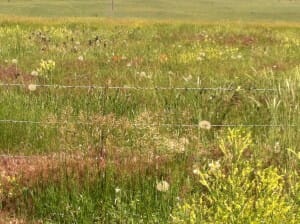
Should the guidelines be more stringent? Are there additional tests that could be run to assure a higher level of safety? I don’t have the background knowledge to reply responsibly. Once again, I have to defer to the experts. However, I am confident that no one is intentionally putting Arvada, Westminster, Broomfield, and Superior residents at risk.
There is no doubt that people who worked at Rocky Flats and lived in the area during its operation were subjected to health risks. Disappointingly, many are not receiving the appropriate attention to their claims. As a result, too many people have become disgruntled and disillusioned by the governments efforts to stymie their health concerns. However, these inappropriate government actions should not overshadow the remediation efforts or the current oversight of the area.
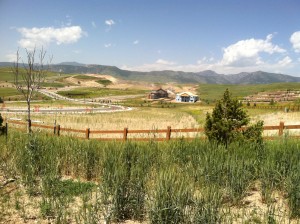
at Candelas
Before building homes in the Candelas community, the developers tested the soil for gamma radiation. Those results confirmed acceptable levels of radioactivity. These findings conflict with the activists’ hyperbolic claims that Candelas glows. It should be noted that naturally occurring minerals and uranium emit low levels of radioactive particles.
The activists continually site a 1970s map produced by Atomic Energy Commission scientists P. W. Krey and E. P. Hardy. This map highlights areas on and off the Rocky Flats site that were contaminated with plutonium. In 2011, The Rocky Mountain Peace and Justice Center hired Marco Kaltofen of the Boston Chemical Data Corp to perform soil tests along Indiana Street. They collected 19 samples from surface soil, plus 3 at a depth of 12 inches and 1 at a depth of 6 inches. Some of the samples showed plutonium levels similar to the findings from the 1970s. This report was discounted by state and federal officials for technical reasons.It is not clear if these results are valid. I have yet to find any documentation that casts doubt on the Candelas findings. After decades of rain, sleet, hail, snow and excessive winds, the location of any remaining surface soil toxins is now mere speculation.
It should not be forgotten that low levels of radiation are caused by nature as well as manmade sources. After the 2011 nuclear disaster in Japan, low levels of radiation from Fukushima were recorded on US soil. Unfortunately, in modern times it is not possible to escape some exposure to plutonium and toxic materials.
Each day, I make choices by assessing my risks after I analyze expert opinions. I do not smoke cigarettes because I know that this behavior increases my likelihood of getting lung cancer. I maintain a healthy diet so that I can avoid cancer and other diseases associated with poor nutrition. I exercise on a regular basis in order to forestall the aging process. I wear sunscreen since I know that I have an increased risk of developing and dying from skin cancer living in Colorado. In 2010, I left my rewarding international teaching job in Bangalore, India because doctors told me that my health was in jeopardy.
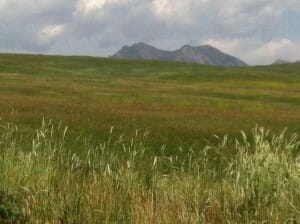
Almost a year ago, my husband and I decided to downsize. We wanted to improve our quality of life by building a smaller and more manageable home. We chose a neighborhood where we could embrace nature by being adjacent to a wildlife habitat. We took time to investigate the area’s history and relied on the available facts. Government experts emphatically stated that it is safe to live in the area surrounding the wildlife refuge. Only a handful of activists disagreed.
We appreciated the concerns raised by a small number of people and activist organizations. It is always important to question potential safety hazards and government bureaucracies. However, activists need to be able to pinpoint the dangers in an effective and convincing way. To date, their information has been extremely limited.
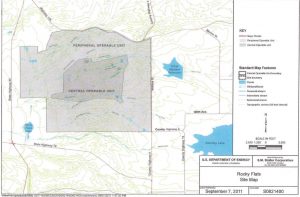
Courtesy http://www.fws.gov/mountain-prairie/planning/ccp/co/rfl/documents/rfl_2011_cdphe_epa_letter.pdf
After looking at a map of the area, I can see why there is a focus on the water. Streams and small bodies of water are pervasive. On a Colorado government website, the CDPHE states that “Surface water at Rocky Flats typically meets stream standards. Trace amounts of organic and inorganic compounds and radioisotopes can be detected in surface water and have occasionally exceeded on-site stream standards. However at no time has surface water leaving Rocky Flats exceeded health standards. Surface water is diverted around nearby water supplies as a precautionary measure.” I will continue to monitor the posted results and ask questions whenever something is not clear.
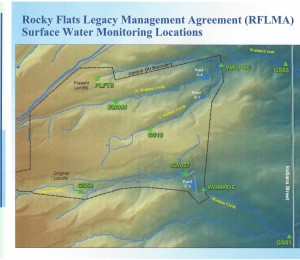
Taken from 2013 Annual Presentation
We are at peace when we look at the tall wild grasses and plants that grow freely without any help from mankind. As the brisk winds rustle through the open space, the dense vegetation sways back and forth. A symphony of crickets, birds, and howling coyotes can be heard from our deck. In the winter, we gazed at dozens of elk prancing about. I would rather live in this environment than a crowded, noisy, and polluted city.
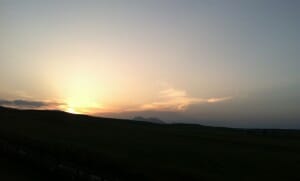
Decades after the closure of Rocky Flats, the land once associated with the ill effects of war is now filled with life. Continual monitoring will hopefully assure that the vegetation and wildlife will flourish and that the buried toxins will not wreck havoc with the envirornment. As long as the test results indicate negligible levels of hazardous materials, and hotspots of illness do not suddenly appear, I feel confident that it is safe to live in Candelas.
Related Blogs
Rocky Flats National Wildlife Refuge: Monthly Nature Programs
Candelas and National Wildlife Refuge
Blog Highlighting Events at Candelas
Benefits to Living Near a School
Pack Rat’s Dilemman- Downsizing
Safety- A Parent’s Prime Concern
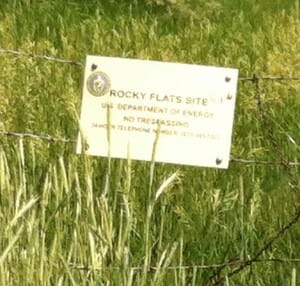
I built my house in Arvada in 1988.
My wife and I raised two children there and moved away in 2006.
My wife just recently had here thyroid removed due to cancer and the rest of us have had our bouts with the same.
Wake up, Candelas is NOT safe, it’s a death sentence.
Just developers trying to get fat at the expense of unsuspecting first time buyers.
http://www.rockyflatssettlement.com
http://www.rockyflatsdownwinders.com
Tony, I appreciate your feedback as a former Arvada resident.
I’m sorry that several members of your family have been diagnosed with cancer. Having dealt with thyroid cancer in our family, I understand your concerns. It should be noted that the family member who had thyroid cancer didn’t live in Arvada before diagnosis.
While I’m not an expert on the causes of cancer or the relationship between living near a former nuclear weapons plant and future illnesses, I relied on recorded facts and common sense before I wrote this blog.
Based on what I read, the people who lived in the vicinity of Rocky Flats were possibly affected by the accidents that occurred at the plant. Everyone has cells that can develop into cancer. Scientists have hypothesized that a variety of factors determines the end result of toxic exposure. Not everyone that is exposed to toxins develops cancer. Moreover, sometimes the reason for family’s getting cancer is likewise unclear.
Your comment clearly indicates that you lived near Rocky Flats when the plant was operational. The people who live in Candelas today have a very different scenario. The plant was remediated after it was closed. While there is a disputed amount of buried material, the post closure testing has repeatedly shown no risk. What facts are you using to substantiate your claims?
Thanks, Sandra. I am also really sorry your family has had to deal with so many health issues, Tony. It is definitely life altering. I personally have 10 difficult diseases. Not one can even remotely be tied to living here for almost 23 years, or exposure to any hazardous elements. My 2 daughters that I raised here are healthy and very happy, with their own wonderful families. Out of countless pets we have had, only one died from cancer. She was a 13 yr old, and a breed with a life expectancy of 10-12 years. I understand there were awful outcomes from the operation of Rocky Flats. I lost 2 uncles that were in their 30’s to brain and lung cancer. Both had worked there.
When I moved here in 1993, it was brought up that Rocky Flats was to the west. They left it up to me to do my research, which I was grateful for. I found no reason not to move here. My family is from Boulder, and my father is a physician. None of them had any problems with me moving my little family here.
I appreciate your blog, Sandra. It is obviously well-researched and substantiated with valid sources. I also understand the concern, but as I have learned over the years, there are many people that just seem to like to stir things up. If there are no facts present, it is a useless waste of words. Keep us posted on the wonderful wildlife sightings! Here in Countryside we have everything but deer and elk.
Lori,
I agree that it is difficult to narrow down a direct cause for some types of cancers. Obviously, there are forms of cancer that are linked to behavior choices and/or genetic factors. As I have mentioned previously, I would be more concerned if I lived close to Rocky Flats or worked at the facility when the accidents occurred. However, my research indicates that exposure didn’t always lead to illness.
That’s life. Very few things are absolute.
People should feel free to continue to question the unknown. Hopefully anyone looking into the current risks associated with living near the wildlife refuge should rely on documented facts and not on opinions.
I almost started school in Westminster and almost took a job in Broomflied, until I looked at where there were located. You have to assess your own personal level of risks versus reward. Whatever they were offering me, for me its not worth risking my health. I risk my health enough by getting into relatively close vicinity on a regular basis to broadcast antennaes and cellular towers at the top of the mountains. but no one lives forever. That reminds me, I need to buy some RF shielded clothing like yesterday.
Yes, I agree that everyone has to assess their own risks. The people who choose to live near Rocky Flats after the closure do NOT believe there is a risk while others who see a risk choose to live elsewhere. That’s one of the wonderful things about living in a free society where people can decide where they live based on the available information.
Had the best childhood! My parents bought a house on Hoyt street. In 1979. That whole area was a field/ creek. No high school, no stores, just hills. They built they High School on the Creek in 1988. That is Why is called Standley Lake High School. Just on our block alone 5 sids babies died with in 2 years. I got epilepsy by 1982 3 kinds. Sister got overian cancer. My friends dad died when she was 19. My dad died when he was 53 of Brain cancer. Every other person on our block dead. From what? Cancer, Lymphoma.
If the government can lie and be secret? Tell you it’s o.k? Then what makes you think they are telling you the truth now? Wake up, if you like the view that much go to a place ware it is busy. They can’t hide in busy places. What about the kids? They breathed that stuff in played in that stuff? Do you think the government cares about them? Heck no? Don’t fall in the trap they want you to believe is safe.
As I mentioned in my articles and my replies, there is no doubt that people who lived near Rocky Flats before it closed in 1989 were subjected to the after effects of the nuclear accidents. However, it is impossible to draw a direct link from living nearby to EVERY single health issue. Yes, there have been certain illnesses that can be caused by exposure, but not everything imaginable. All families, regardless of where they live, experience health problems. My own children as well as my extended family have suffered from a variety of unusual and debilitating diseases while living in different parts of the U.S.
Decades after the closure and almost a decade after the remediation, what evidence (concrete facts) do you have that any surface or breathable toxins remain?
What about the SIDS babies all in one year? The crazy thing is it was all on say block. Question? Why didnt the government test any of the residents? Why not? If they can shut down a plant and not let it open to public the they know something it up. When animals dig in the ground if they make it back up they bring that crap up. THEN it blows in the wind. Something to think about.
Krissy,
Thanks for expressing your concerns. However, I’m not a scientist or a government official. Thus,I’m unable to answer the questions that you raise.
Thanks for the well researched information Sandra. Considering moving to Candelas and wanted to ask if anything has changed since you wrote this article? Have there been other reports released, town meetings, or any other issues since you moved there? Or are you still happy with the community?
Ben,
I’m not aware of any significant changes.
Even though the Wildlife Refuge hasn’t opened, it does run small group tours and has a knowledgeable staff. I would reach out to them if you have questions about the safety of the refuge and the surrounding land.
You can also contact the Rocky Flats Stewardship Council and ask to be put on their mailing list. Their website includes useful info. They have at least 4 public meetings a year and provide an abundance of information about the current testing of the property and discuss local concerns. Be aware that some of the reports can be very technical.
Candelas is a wonderful community that is attracting a wide variety of people. A public school is currently under construction on the west end of the development.I highly doubt Jeffco would build a school, if they felt the area was unsafe.
My husband and I still feel that it was a good decision to move here.
Good luck with your house hunting endeavor. Moving can be a fun and enriching experience, but it is oftentimes flooded with an overabundance of stress. Don’t hesitate to write again if you have more questions.
Hello Sandra,
Thank you for your hard work and information which is greatly appreciated. I am in the process of relocating to the Denver metro area from a very pristine scenic part of the country surrounded by natural beauty and abundant wildlife north of California. I currently live on one of the most scenic rivers in the country, surrounded by the forest which is so difficult to leave. Because where I am leaving from, it is very difficult to select a new community to move to in the Denver metro area. I just entered into a contract yesterday in Candelas for a new home without actually visiting the Denver area. I considered many of the popular communities through internet research, and I am having troubles relocating to particular communities with so much suburban type growth, which reminds me of southern CA subdivision tract living that I am too familiar with, in contrast to living in a pristine area surrounded by nature. Since my new house purchase in Candelas has a 9 month projected completion time frame, I will continue to evaluate the pros and cons of living in Candelas.. a very tough call for sure. Ironically, I am in a risk assessment business. I look forward to reading more about this issue and want to thank everyone in advance who is willing to share. Aloha
Lee, Thanks for taking the time to comment. Whenever you purchase a new home, it is essential that you take the time to research the neighborhood and surrounding area. You need to feel comfortable with your decision. I encourage you to ask as many questions as possible so that you can satisfy your comfort level. To date, I’m happy with our choice to live in Candelas.
I highly recommend (if you haven’t already) checking out the Rocky Flats Stewardship Council website. http://www.rockyflatssc.org/ This site provides factual information about Rocky Flat’s history as well as ongoing issues.
If you have any additional questions, please feel free to contact me via my email address–sandy@sandrabornstein.com.
You said:
Remediation of Rocky Flats. The clean up met or exceeded the designated standards set by the government agencies. Most of the toxic and radioactive materials were sent to another location. Hazardous substances left onsite were buried at least 6 feet underground. This confined area is not open to the public. The DOE controls and provides security for this site. The wildlife sanctuary acts as a buffer between the COU and Candelas.
I would like to point out that the statement that the “clean up met or exceeded the designated standards” is a bit off….we don’t even KNOW what it takes to clean up plutonium or uranium. I don’t mean “we” as in you and I, but “we” as in anyone. It is basically not a clean-up-able type of element. That means, there really isn’t any such thing as standards. Have you read Len Ackland’s book “Making a Real Killing”? It talks about the various chemical compounds and what we don’t know about them.
Based on the lack of knowledge of how to actually “clean up” radioactive materials, I wouldn’t consider even the buffer zone safe. Below 6-feet, we don’t know what’s up there. We also don’t know how much of the “unknown” compounds have actually leached into the soils in as well as outside the buffer zone. Safe? By who’s standards? We don’t know how to mitigate radioactivity in the soils, waters and air. So, how do we know even Downtown Denver is even safe? We honestly don’t.
I agree with an earlier comment about assessing your OWN level of personal risk for living there or even in nearby Boulder, Golden…perhaps as far as Denver. When I moved to Arvada, I wasn’t even aware of Rocky Flats. I don’t live in the Candelas area but I’m not far. I’m not sure how safe I am…but my neighbors did mention when they moved into the area in the 70s, they had to sign off that they knew they were in an area located near an atomic plant. Again, it was still highly secretive, but not really touted as a radioactive hazard.
It is sad that the fear of a Cold War took precedence over safety of human lives. However, either one could kill you.
Just wanted to say a few words…I’m not sure what is safe and not. I supposed time will answer all.
My article was written from the perspective of a local resident who reviewed a selection of available information in 2014. My conclusions were based on my interviews and what I read. Since I’m not a scientist, I’m not in a position to defend the validity of any government safety standards. People reading my article are free to come up with their own conclusions based on their background knowledge, newer information, and their own agenda.
It should be noted that I attended CU-Boulder in the 1970s. Rocky Flats was NOT a secret. While the plant was operating, people had multiple concerns about the dangers associated with the radioactive materials.
A line needs to be drawn between the general safety of the area while the plant was operating and decades later after remediation. Oftentimes, people don’t differentiate between when the plant was active and the post remediation phase. When Rocky Flats was operating, there were accidents that affected the buildings and surrounding area. The total size of the affected area remains unclear. To the best of my knowledge, there is no data that states how many people can trace cancer and other illnesses directly to their exposure to these specific toxins. MOST of the people who worked or lived in the area have yet to get sick.
Controversy continues to surround the clean up and remediation safety measures. One can only hope that the government guidelines eliminated the likelihood of any contaminants hurting current residents. Most of the toxins were sent elsewhere.Is anyone concerned about those locations?
Yes, some toxic materials were buried in the ground. It should be noted that a consortium of local governments and federal agencies continue to monitor the former Rocky Flats site. Feel free to contact the Rocky Flats Stewardship Council for past and current copies of these reports. http://www.rockyflatssc.org/index.html
My thoughts, exactly Nina. My sister lives in Five Parks and even that makes me nervous for her, and her girls.
How can there be standards for cleaning something up, and monitoring it, when there are no real standards proven safe over time for this? The government used to tell us tobacco and cigarette smoking was safe too- just as one example.
Governments and corporations do hide things, cover things up, and mislead, if money is involved. Just watch Erin Brockovich, (based on a true event of a power company compromising people’s health for profit) if you don’t possibly think a home builder and governments could mislead, about how “safe” a site to build homes on is.
Even if they are 100% honest now, can they tell you what the long term health effects from living near a nuclear waste burial site will be in 5, 10, 15, 20 years, or beyond will be? No. The government can’t tell you that either, because no one knows.
It makes me sad, these communities are being sold to people without the long term known health risks. I guess we all hold our breaths, and hope there are no long term health effects on these people buying homes here.
If people end up sick and dying in 20 or 30 years, then the government and builders will blame it on the homeowners saying they knew they were buying near Rocky Flats…it was their fault, not ours.
Anyone can say anything to make money. Arvada gets the tax revenue, the builders get their millions, let’s just hope the people buying here don’t get cancer or worse. I’ve had thyroid cancer. It’s not fun. The thyroid is VERY sensitive to environmental influences. Thyroid cancer is one of the fastest growing cancers, in both men and women and guess what? NO ONE knows yet what causes it. There is no proven cause. Some say it’s caused by cell towers, some say fluoride in the drinking water, some say dental x-ray’s back in the day (when it wasn’t known to cover the thyroid bed during an x-ray. We were told that was safe to leave the thyroid bed uncovered during a dental x-ray. Now they know it isn’t safe.) Some people are more sensitive to these things, than others. But that is the problem and issue with building homes here.
You won’t know until it’s too late, if living so close to Rocky Flats, will cause you health issues. maybe you are fine, but your kids suffer. I certainly can’t advise anyone to take anything the government would tell you as absolute truth, because science is always changing. What they know today, could change tomorrow. What they say isn’t dangerous today, could be tomorrow- just like the dental x-rays and covering the thyroid bed. But I don’t think anyone would be shocked to hear, one day the government tells us, living anywhere near a former nuclear plant, that had many toxic accidents, and still has waste buried there, is good for your health.
What about where the other toxic waste was sent and buried? I don’t know this, but hope it is far away from people, and they don’t build houses next to those either. That would be interesting to look up.
I just hope all the people who are concerned about this, are wrong. I guess time will tell, one way or another. I just wouldn’t want to be, nor have my family and friends be the guinea pig in finding out, if the effects were not good.
This recent article is what led me to your blog too, FYI.
https://colorado.ourcommunitynow.com/2017/05/06/in-1989-this-suburb-of-denver-was-so-polluted-with-radioactive-material-the-fbi-suspected-eco-terrorism/
Heather,
Thank you for sharing the article. Unfortunately, this article only tells part of the story and is clearly written by someone who has an agenda.
Have you ever looked at the Rocky Flats Stewardship Council website? http://www.rockyflatssc.org/index.html.
This site has many links as well as information about the current and past monitoring of the area.